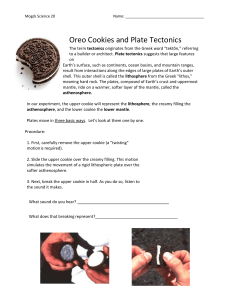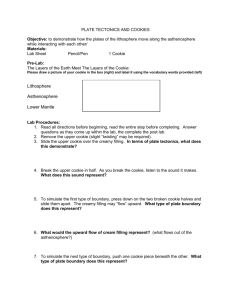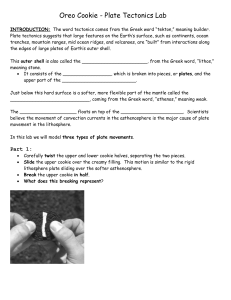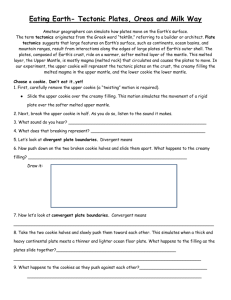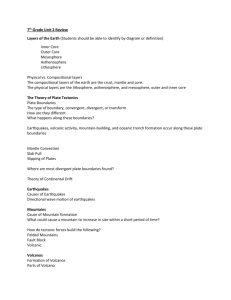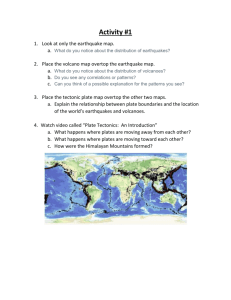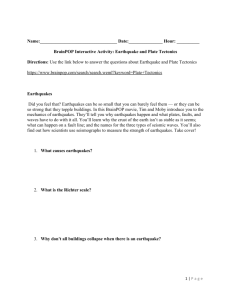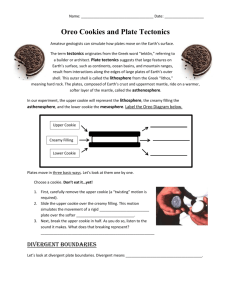Earth science: Tech-lesson Guide Lite by Suze Nolan 5/13 Movers
advertisement
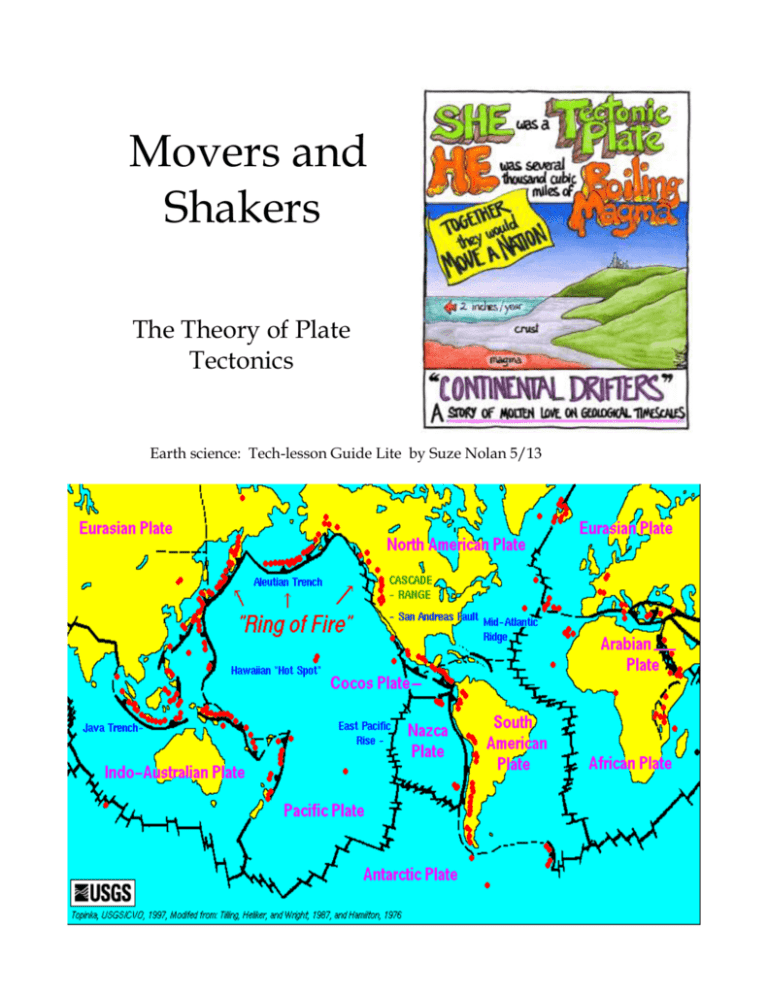
Movers and Shakers The Theory of Plate Tectonics Earth science: Tech-lesson Guide Lite by Suze Nolan 5/13 Movers and Shakers: The Theory of Plate Tectonics by Suze Nolan Objective: To expose students to the origins of the theory of plate tectonics To explore the evidence for plate tectonics and demonstrate basic plate movement types An audacious idea, put into print in 1915, that the current location of continents on Earth was not permanent. Explain: Visit this site to learn the pieces of plate tectonics theory http://pubs.usgs.gov/gip/dynamic/dy namic.html Go to the USGS site below and watch the series of animations that show the movement of the continents over 600 million years http://www2.nature.nps.gov/geology/ usgsnps/animate/pltecan.html Extend: At the NASA site read how Alfred Wegner used fossil evidence to support his idea of Pangea. http://earthobservatory.nasa.go v/Features/Wegener/wegener_ 4.php Here’s a bit more about how the competing models were proven incorrect by Wegner’s hypothesis. http://cosscience1.pbworks.com /w/page/8286027/Lesson%20 10-1%20Continental%20Drift Materials: 3 packages Double Stuff Oreos (1 for demonstration, 2 for mastication) Guide from Parks and Plates: The Geology of Our National Parks, Monuments and Seashores by Robert Lillie 2004 From Robert Lillie, The Geology of National Parks, Monuments and Seashores Simulating plate boundaries with Oreo® cookies. The upper Engage: cookie is the lithosphere, the creamy filling the asthenosphere, and the lower cookie the lower mantle. (Be sure to get the “Double Stuff” variety, which has adequate asthenosphere)! First, carefully remove the upper cookie (a “twisting” motion is required). Slide the upper cookie over the creamy filling to simulate motion of a rigid lithospheric plate over the softer asthenosphere. Next, break the upper cookie in half. As you do so, listen to the sound it makes. What does that sound represent? (An earthquake. Message: it takes cold, brittle lithosphere to make earthquakes – earthquakes do not occur in the soft, flowing asthenosphere). a) To simulate a divergent plate boundary, push down on the two broken cookie halves and slide them apart. Notice that the creamy filling between the two broken “plates” may tend to flow upward, similar to the rising, decompression, and partial melting of hot asthenosphere at mid-ocean ridges and continental rift zones. b) Push one cookie piece beneath the other to make a convergent plate boundary. Note that this is the only situation where the cold, brittle lithosphere extends to great depths, and hence the only place where deep earthquakes occur. The very largest earthquakes are at subduction zones where two plates get stuck together for centuries, then suddenly let go. c) Simulate a transform plate boundary by sliding the two cookie pieces laterally past one another, over the creamy filling. You can feel and hear that the “plates” do not slide smoothly past one another, but rather stick then let go, stick then let go. The cracking sound you hear each time is like an earthquake occurring along the San Andreas Fault in California. d) A hotspot can be simulated with the demonstration in the upper left photo. Imagine if a piece of hot, glowing coal were imbedded in the creamy filling – a chain of “volcanoes” would be burned into the overriding cookie.
